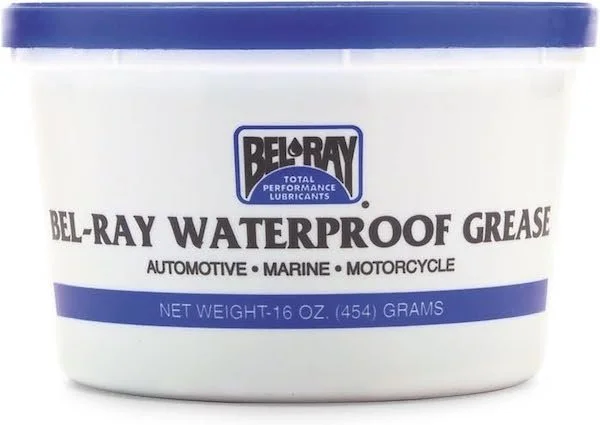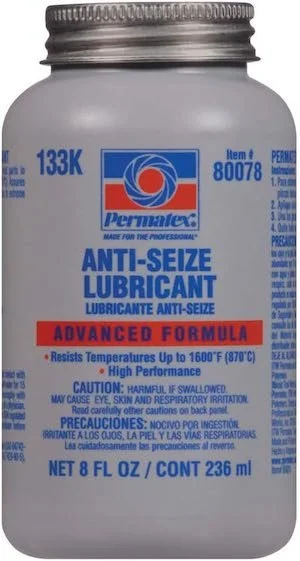When to Use Thread Locker, Grease, or Anti-Seize
Thread locker vs grease vs anti-sieze
In the shop and around the campfire, one debate has come up again and again over the years. When to use thread locker and when to use grease and/or anti-seize. The running joke is:
Use anti-seize on things you want to take apart that tend to get stuck,
Use thread locker on things you need to stay together that tend to come apart,
Use grease on everything else.
Adventure motorcycles are built to tackle challenging terrain, endure intense vibrations, and conquer long days on the road. As such effectively securing fasteners on your bike is crucial for ensuring reliability, safety, and ultimately your fun out on the ride. Knowing when to use thread locker, grease, or anti-seize can help. So, let’s take a look at when and how to employ each of these methods.
Using Thread Locker
Thread locker is essentially an adhesive designed to prevent fasteners from coming loose due to vibrations or mechanical forces. Here's when you should consider using thread locker for your adventure motorcycle:
Exposure to Vibration: Adventure motorcycles often encounter intense vibrations, especially when ridden off-road. Thread locker is an excellent choice for fasteners exposed to such vibrations.
Low Disassembly Frequency: Thread locker is most effective when used on fasteners that won't be removed and replaced frequently. It creates a semi-permanent bond, making disassembly challenging.
Matching Metals: Thread locker works best when the metals of the fastener and the surface match, such as steel bolts and steel nuts.
Considerations:
Strength Varieties: Thread lockers come in various strengths, including low, medium, high, and wicking. The most common thread locker for ADV riders is still Loctite 424 (Medium). Medium-strength thread lockers are popular for adventure motorcycles because they hold well but still allow disassembly. High-strength thread lockers are for permanent bonds, while wicking types are used on fasteners that you need to secure without disassembling the part. Much like penitrating lube the thread locker finds it’s way into the fasteners.
Rule of Thumb: Avoid using thread locker on light-duty bolts, bodywork, threads that are imbedded in plastic parts (think gas tanks and air boxes ) and fasteners that need frequent removal and retightening.
Application Tips:
Clean the threads before assembly to ensure a secure bond.
Apply a minimal amount of thread locker, usually just one drop or just enough to coat three courses of thread.
Do not wait for the thread locker to set before assembly; it needs to be liquid to do it’s job.
Allow 24 hours for the thread locker to fully cure.
Remember that leaving old thread locker on threads can lead to false torque readings, potentially causing bolts to come loose unexpectedly.
Using Grease
Grease is a lubricant that helps reduce friction between fasteners and prevents corrosion. Here's when to use grease on adventure motorcycles:
High Torque Applications: Grease is beneficial in high-torque applications where lubrication is essential for smooth movement.
Mismatched Metals: When fastening dissimilar metals, such as steel bolts into aluminum housings, grease can prevent corrosion and help disassembly.
Considerations:
Grease Selection: For adventure and dirt bike applications, marine or waterproof grease is often recommended. Avoid overcoating fasteners; a light coating on the threads is usually sufficient.
Torque: Lubricated bolts may yield higher torque readings than dry ones, so it's crucial to adjust your torque wrench slightly lower than you normally would.
A Thin Film Is Enough: Avoid using excessive grease, especially when threading into closed housings, as it can exert excessive pressure, potentially damaging the housing.
Grease Can Be Harmful: Refrain from using grease around O-rings or paper gaskets, as it can degrade these materials over time.
Using Anti-Seize
Anti-seize is a lubricating compound that prevents parts from seizing or bonding due to corrosion, high temperatures, or dissimilar metals. On adventure motorcycles, consider using anti-seize when:
High-Temperature Parts: Anti-seize is suitable for high-temperature components.
Mismatched Metals: When fastening steel bolts into aluminum or other dissimilar metals, anti-seize helps prevent oxidation and binding.
Considerations:
Use Lock Washers: When applying anti-seize, it's advisable to use locking washers wherever possible to prevent fasteners from backing out.
Watch Your Fasteners: When using anti-seize, it's essential to apply it correctly and check and retighten often to avoid issues with fasteners coming loose.
Conclusion
Fasteners play a crucial role in the safety and performance of adventure motorcycles, especially in rugged off-road conditions. Selecting the appropriate method for securing fasteners, whether it's thread locker, grease, or anti-seize, depends on factors such as vibration, disassembly frequency, metal compatibility, torque requirements, and the specific application.
Choosing wisely and ensuring everything is properly secured can make the difference between a good and a bad day, especially in harsh riding conditions. Whether you're tackling rocky trails or cruising on the open road, familiarizing yourself with thread locker, grease, and anti-seize will help you keep your motorcycle in top shape and ready for your next thrilling adventure.




